By Pat Mactaggart
The waning months of 1943 were a bleak time for the German forces in southern Russia. Since the massive battle at Kursk in July, the Red Army had pushed the armies of Field Marshal Erich von Manstein’s Army Group South hundreds of kilometers to the west.
The Soviet city of Belgorod fell on August 5, followed by the liberation of Kharkov later in the month. With the Germans still reeling, the Soviets were on the western bank of the Dnieper River by early October.
After a brief lull for rest and refitting, the Russians struck again, pushing across the Dnieper and retaking Kiev on November 6. Throughout most of
November and December, they kept driving westward in the Kiev sector.
While General Hermann Hoth’s Fourth Panzer Army was trying to hold the Russians west of Kiev, the other armies in southern Russia were also in trouble. Along the Sea of Azov’s coast, General Karl Hollidt’s Sixth Army, part of General Josef Harpe’s Army Group A, was sent reeling across the Nogai Steppe in the last week of October. By the end of the month, General Fedor Ivanovich Tolbukhin’s 4th Ukrainian Front had sealed off the Crimea, trapping General Erwin Jaenecke’s Seventeenth Army and effectively keeping it from participating in any further action. By the end of November, Tolbukhin had pushed the Sixth Army away from the coast, forcing it to form a new defensive line 100 kilometers to the north.
On Hollidt’s left flank, Army Group South’s First Panzer Army, commanded by General Hans Hube, had been pushed back about 100 kilometers from its Dnieper positions on its left flank and in its center, but Hube’s right flank still held firm along the river line. The bulge created in the Zaporozhye was hit time and again by the 3rd Guards and 12th Armies of General Rodian Iakovlevich Malinovskii’s 3rd Ukrainian Front, but German forces were able to stop them from breaking through.
To Hube’s north was General Otto Wöhler’s Eighth Army. In the Kanev sector, at the junction of the 1st and 2nd Ukrainian Fronts, the Germans had held their river line. South of Kanev the Soviets had crossed the Dnieper in the Cherkassy area and had made gains of about 20 kilometers, but the rest of the army had been forced to steadily retreat before finally establishing a new line.
Throughout November and the first week of December, General Ivan Stepanovich Konev, commander of the 2nd Ukrainian Front, faced both Wöhler’s army and part of Hube’s First Panzer Army. Although he had seven infantry armies backed by the powerful 5th Guards Tank Army (Col. Gen. Pavel Alekseevich Rotmistrov), Konev resorted to battering the Germans, biding his time for a decisive strike. He was fighting a battle of attrition—something the Germans could not possibly afford.
50 to 75 Percent Combat Effectiveness
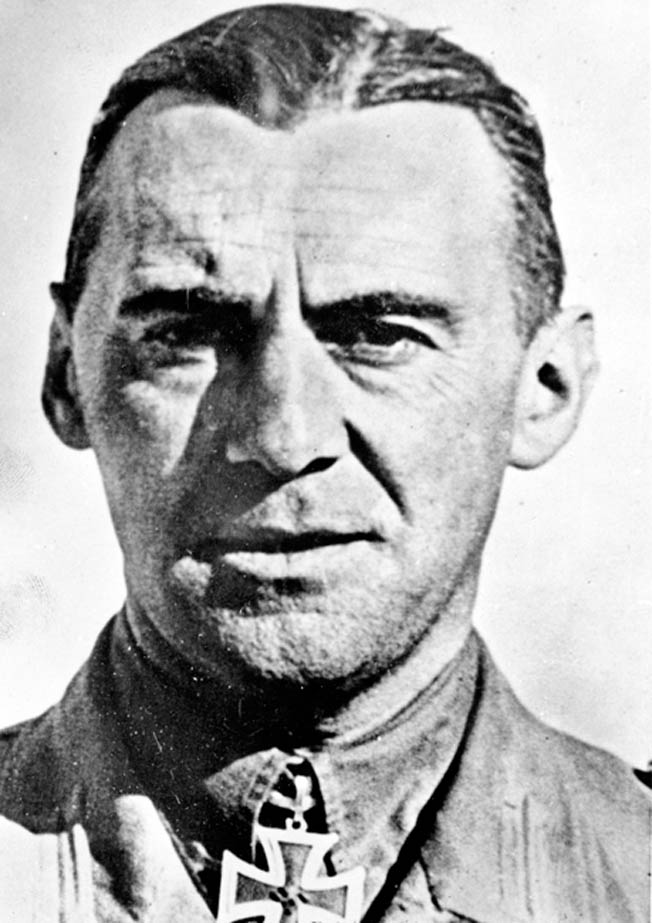
On paper Wöhler’s Eighth Army looked impressive. During the first week of December he controlled Maj. Gen. Friedrich Schulz’s III Panzer Corps (57th and 72nd Infantry Divisions, 5th SS Panzer Division Wiking, 3rd Panzer Division, and SS Major Lucien Lippert’s Wallonien brigade, made up of anti-Communist French-speaking Belgians. Also included were Maj. Gen. Rudolf von Bünau’s XLVII Panzer Corps (320th, 389th, 282nd, and 106th Infantry Divisions) and General Wilhelm Stemmermann’s XI Army Corps (14th and 11th Panzer Divisions and the 376th Infantry Division). His army reserve was Maj. Gen. August Schmidt’s 10th Panzergrenadier Division (10th PGD).
Konev’s war of attrition had taken its toll. Most of the infantry divisions were only 50 to 75 percent combat effective if they were lucky, and the small flow of replacements for casualties proved totally inadequate.
It was the same for the panzer divisions. The 3rd Panzer Division reported that the experienced troops of the division were in fighting trim but lamented, “Newly arrived replacements were inadequately prepared for combat and required additional training.” It also reported that tracks and motors were worn out on the panzers and motorized vehicles and that spare parts were in short supply.
The commander of the 3rd Panzer was a newcomer to the Eastern Front. Brig. Gen. Fritz Bayerlein had taken over the division on October 25. Before that he had served as chief of staff for Field Marshal Erwin Rommel’s Afrika Korps and later the German-Italian Army in Africa. In a 1968 letter to the author, Bayerlein, who died in 1970, said he was excited about taking command of a panzer division, but the problems facing troops on the Eastern Front were reminiscent of the logistics that faced Rommel in Africa.
“Lack of supplies, replacements of both men and vehicles and a superior enemy force—that’s what we faced in Africa and that is what we faced in Russia,” he wrote. “I had only exchanged the sweltering heat of Africa for the bitter cold of the Steppe. Also, we had recently participated in the Kiev counteroffensive. Our panzers were worn out, even though our mechanics worked hard with what they had to try and keep them serviceable.”
Kirovograd: A Strategic Supply Center
While Konev kept the Germans guessing, hitting them up and down the line, his staff was working on plans for a new offensive. The Soviet High Command (Stavka) saw great possibilities for the southern sector of the front. The Russian success at Kiev had created a bulge farther to the south. Moscow saw the chance of swinging the 1st Ukrainian Front south with the objective of cutting off and destroying several German corps and destroying the Eighth Army. Konev’s 2nd Ukrainian Front would advance westward to complete the destruction.
Born into a peasant family in 1897, Konev was called up to serve in the czar’s army in 1916. When the war with Germany ended he returned home and became a rising star in the local Bolshevist party.
During the Russian Civil War he fought in the Far East and became the commissar of the 17th Maritime Corps. Attending the Frunze Military Academy in 1926, Konev commanded a regiment, division, and a corps before returning to the academy for two years to study from 1932 to 1934. He was posted to Mongolia in 1937 and later took part in battles with the Japanese along the Khalkin-Gol River.
Surviving Stalin’s army purges, Konev commanded the 19th Army at the beginning of the German invasion before taking command of the Western Front, which was charged with defending the approaches to Moscow on September 12, 1941. He later commanded the Kalinin Front, Western Front again, Northwestern Front, and Steppe Front, which was later renamed the 2nd Ukrainian Front.
As he looked at the maps laid out before him, the area held by Schulz’s III Panzer Corps drew his attention. The city within Schulz’s sector would need to be taken quickly if the destruction of the Germans was to be achieved. Its name was Kirovograd.
Founded around a military settlement in 1754, the city was located on important trade crossroads, which eventually made it a major center of trade. One of the few good east-west roads in the region ran through Kirovograd, as did a north-south rail line, which made it a prime location for a supply and communications center.
The city was occupied by the Germans in early August 1941. As the main attack continued eastward, the occupying forces were joined by SS Major Gunther Hermann’s Einsatzkiommando 4b, a subunit of SS Brig. Gen. Otto Rausch’s Einsatzgruppe C. Between August 23 and September 30, 1941, Hermann’s men systematically slaughtered the approximately 5,000 Jewish inhabitants of the city. When the “action” was over, there were about 10 survivors.
Berlin also recognized the importance of Kirovograd. The roads and rail hub at the city brought in vital supplies to both the Eighth and First Panzer Armies. In addition to the lines of communication going in and out of the city, a retreat in the Kirovograd sector would expose the left flank of the First Panzer Army, forcing a retreat or inviting a Russian strike in the army’s rear area. This was something that Hitler would not tolerate.
“My Men Were Thoroughly Worn Out”
Konev kept fine tuning his operational plans while he waited for the weather to change. Heavy rains and above freezing temperatures had made the movement of armored and mechanized forces nearly impossible, as most of the roads in the area had turned into seas of mud. The Russian commander used the time to slowly bring up supplies and to integrate replacements into his divisions. Many of those replacements came from newly liberated areas of Russia, and they had just the basics of military training. The rain also hampered the Germans’ ability to use aerial reconnaissance, making it easier for Konev to mask his disposition of troops in the main points of the planned attack.
The weather finally turned cold enough for the Soviets to resume their offensive. General Nikolai Fedorovich Vatutin’s 1st Ukrainian Front hit General Erhard Raus’ Fourth Panzer Army west of Kiev with a ferocity that put Raus’ army on the verge of disintegration. Field Marshal von Manstein immediately called Berlin for reinforcements. In the meantime, he tried to counter the Russians with what meager forces he had.
Meanwhile, Konev began his thrust toward Kirovograd with the object of encircling its defenders and the other divisions of the XLVII Panzer Corps. The land east of the city was fairly good tank country with flat, open plains broken by low ridges. Konev made good use of the terrain, and his 5th Guards Tank Army and 5th Guards Army (Lt. Gen. Aleksei Semenovich Zhadov) made good progress.
Soviet pincers were already closing around Kirovograd, and Manstein called on his worn-out panzer and mechanized divisions to stem the Russian tide. Brig. Gen. Wend von Wiethersheim’s 11th Panzer Division was involved in an attack in the first week of December that stopped a Russian breakthrough near Dykivka, about 53 kilometers northeast of Kirovograd. It then moved to the Novhordivka sector, 72 kilometers southwest of the city, to fend off another attack. After that, the division moved to Ostnyanazhka, 16 kilometers north of Kirovograd, to take part in a counterattack that slowed but failed to stop a new Soviet assault.
“My men were thoroughly worn out,” he wrote in 1972. “Our vehicles suffered many breakdowns as we were sent to stop the Russians in several areas. The division did its best at Ostnyanazhka, but it was not enough. We were finally forced to call off the counterattack and take up defensive positions in the area.”
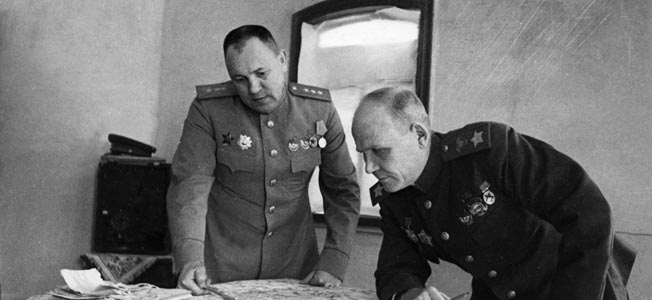
Colonel Martin Unrein’s 14th Panzer Division also participated in operations north of Kirovograd and was part of the Ostnyanazhka counterattack. Following the action, it took up defensive positions in the Kam’yanka, some 56 kilometers north of the city.
The main body of the 3rd Panzer Division was also part of the counterattack. At its conclusion, Bayerlein’s men took up defensive positions for a couple of days. “We were exhausted,” he recalled. “Our panzer force was greatly understrength, as were the rest of the other panzer divisions. We were also about 20 percent understrength as far as personnel went.”
Assaulting the Hills Around Novhordivka
Manstein’s pleas for reinforcements did have some results. Elements of the 2nd Fallschirmjäger (Parachute) Division (2nd FJD) began arriving in the Kirovograd area during the second week of December, as the Russians had not yet closed their trap. The unit supported von Wietherheim’s 11th Panzer Division during the battle around Novhordivka.
The paratroopers were supported in their attack by the newly activated 286th Assault Gun Detachment (Captain Albert Bausch), which had recently arrived from France. When the attack began, the 286th was at the head of the assault, forming an armored wedge in front of the paratroops. Its 3rd Battery destroyed five Russian tanks and several antitank guns as it moved forward.
Several key hills had to be taken from the enemy before Novhordivka could be stormed. The Russians had fortified their positions with antitank guns, which were supported by infantry and some tanks. In a December 18 attack the paratroopers stormed hills 170.3 and 163.7. Bausch disregarded orders to provide support from a distance and ordered his guns to advance with the infantry. After a two-day struggle the hills were taken, and a foothold in on the southern edge of the town was secured.
The battle continued unabated both inside the town and on the hills in the area. Lieutenant Erich Lepwokski, temporary leader of 5/FJ Rgt. 2, led his men against a line of Soviet antitank guns positioned on Hill 167 along with the rest of the regiment’s 2nd Battalion. The two PzKpfw. V Panther tanks, supplied by the 11th Panzer, that were to support the attack were driven back by heavy fire. Lepkowski and elements of the 7th Company succeeded in overrunning an enemy antitank battery, but that was as far as they got.
A second attempt to take the hill was made later in the day. The Germans succeeded in driving the two defending infantry battalions off the hill, but they had paid a heavy price. Lepkowski’s 5th Company had only 45 combat-effective men left. The 7th Company had only 35. Novhordivka finally fell, and the paratroopers took a defensive stance with Bausch’s assault gun detachment in support of the defenses.
Meanwhile, the Russians were still pressing Kirovograd from the east. Schmidt’s 10th PGD was sent to support Colonel Otto Schwarz’s 376th Infantry Division, which occupied positions in and around the city. In heavy fighting the Soviet attack was stalled, prompting both sides to form static positions. While Vatutin continued to batter the Fourth Panzer Army in the north, Konev used the time to regroup his units in front of the city for the next phase of his Kirovograd operation. Meanwhile, Soviet spearhead units continued to filter around the city.
The defense of Kirovograd was now in the hands of Maj. Gen. Nikolaus von Vormann, who had just replaced General Rudolf von Bünau as commander of the XLVII Panzer Corps. At the beginning of January von Vormann’s order of battle looked more like a small army than a corps as far as subordinate divisions were concerned, although all were understrength.
Born in the West Prussian city of Neumark in 1895, Vormann saw service in World War I and remained in the Army during the postwar years. He served as chief of staff to the III and XXVIII Army Corps during the first years of the war before taking command of the 23rd Panzer Division in December 1942. Vormann led the division during the retreat to the Don and the battle for the Donets Basin. In the fall of 1943, the 23rd distinguished itself in the battle for the Dnieper bend. Vormann took command of the XLVII Panzer Corps just two days before his 49th birthday.
His corps headquarters was located at Mala Vyska, some 43 kilometers northeast of Kirovograd. Looking at his battle maps, the German commander could see that his divisions were stretched incredibly thin. Von Wiethersheim’s 11th Panzer Division occupied a line northeast of Kirovograd about 15 kilometers west of Zham’yanka, with Schmidt’s 10th PGD to his right. Unrein, who was promoted to brigadier general on January 1, held positions northeast of Adzhamka, about 30 kilometers from Kirovograd. South of Unrein, Schwarz’s 376th Infantry Division manned an arc-shaped line about 25 kilometers west of the city.
Bayerlein, who was due to relinquish his command in order to supervise the formation and training of the Panzer Lehr Division in France, was moving his 3rd Panzer to the Kirovograd area. Vormann’s other two divisions, Maj. Gen. Werner Forst’s 106th Infantry and Brig. Gen. Hermann Frenking’s 282nd, manned the line to the north of the 11th Panzer. North of the Eighth Army, the 1st Ukrainian Front was already moving again, making some progress against the Fourth Panzer Army while Konev bided his time. He planned to reopen his attack on January 5 while the Germans were preoccupied with Vatutin’s assault. At 0600 all hell broke loose in the Kirovograd sector as more than 188,000 Soviet shells rained down on the German line.
“My headquarters was west of Kirovograd,” Bayerlien recalled, “but we could clearly hear the thunder of that devastating barrage. I immediately ordered the division to go on full alert. After that, I visited some of my units that occupied forward defensive positions to get an idea of how things were going in our sector. Then I had my driver head back to my battle headquarters at Lelekovka [about three kilometers northeast of Kirovograd].”
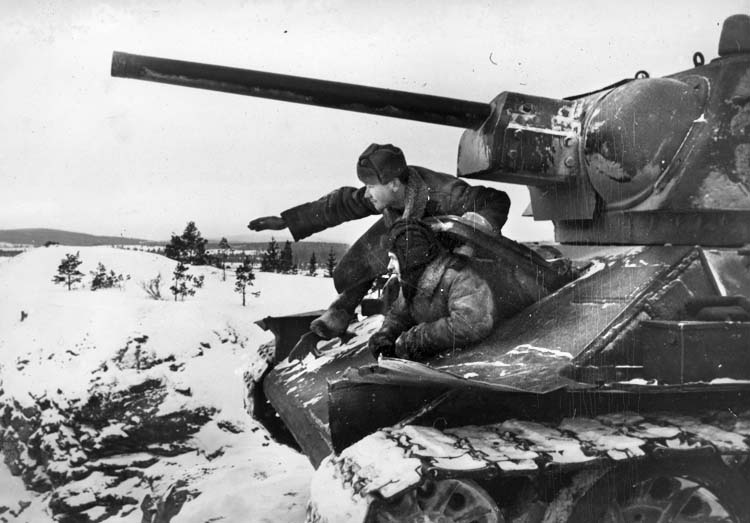
After conferring with his staff, Bayerlein set out for the city. The situation was becoming critical even as his vehicle sped off. Following the Soviet bombardment, Konev unleashed four armies to hammer the German line. Maj. Gen. Fedorovich Tarasov’s 53rd Army struck north of Kirovograd while Zhadov’s 5th Guards Army hit the line west of Zham’yanka. South of Kirovograd Col. Gen. Mikhail Stepanovich Shumilov’s 7th Guards Army struck the Novhordivka sector. The attacks north and south of the city were supported by more than 500 tanks from Rotmistrov’s 5th Guards Tank Army.
120 Destroyed Tanks in One Day
A steel storm also hit the men of the 2nd FJD. On Hill 159.9 the remaining 45 men of Lepkowski’s 5th Company pressed themselves into the bottom of their secondary positions on the reverse side of the hill as the artillery continued to pound them. Lepkowski and most of his remaining men were veterans of battles in Africa and Italy, and they had dug their positions well, having been under the guns and air attacks of the Western Allies. As soon as the Soviet fire abated, they rushed to their frontline foxholes.
On the heels of the bombardment came a wave of Soviet tanks and infantry. The paratroopers themselves had no antitank weapons, but they did have bundles of hand grenades taped together, which they hoped would disable or destroy the steel monsters at close range, and antiaircraft elements dug in at critical areas. Luckily for the paratroopers, Bausch’s assault gun detachment was also on hand to meet the Russian attack. Set up in ambush positions, the assault guns, assisted by paratroop antitank methods, destroyed a leading group of 25 tanks within a few minutes with the loss of only two disabled vehicles. During the first day of the Russian attack, more than 120 enemy tanks were claimed as destroyed or disabled in the 2nd FJD’s sector.
Although bloodied, the Soviets were able to make several penetrations in the German line, allowing Rotmistrov’s tanks to speed westward south of Kirovograd. It was the same in the north, with Soviet tanks making their way through gaps in the line. Red Army infantry followed closely, swirling around stubborn strongpoints and leaving them for troops of the second wave.
Vormann had already informed Berlin of the attack. Explaining the situation he faced, he asked permission to retreat to a shorter line to the west of Kirovograd. His request was immediately denied. Hitler would have none of it and ordered that Kirovograd be defended to the last man and the last bullet.
An Ominous Situation Report
Bayerlein was contacted by Vormann later in the morning. The 3rd Panzer was ordered to ready itself for movement immediately. Bayerlein informed his superior that the order had already been given, and he asked for a situation report. The picture was not a pretty one.
Von Wiethersheim’s 11th Panzer had been forced to engage in a fighting retreat. The Soviet 7th and 8th Mechanized Corps had broken through at the junction of the 11th Panzer and Schmidt’s 10th PGD and were continuing to drive west. The 10th was badly battered and was already retreating to the southwest.
Unrein’s left flank had been broken, and the 14th Panzer was being pushed back toward Adzhamka. To Unrein’s right, mechanized forces had severed the junction with the 376th Infantry Division and the 2nd FJD, forcing Schwarz back in conjunction with Unrein’s retreat. To help stave off a full-blown rout, Unrein sent 12 panzers to help the 376th combat advancing Soviet tanks.
As Bayerlein digested the information, he could hear the sounds of tanks in the distance. “What are your orders Herr General?” he asked Vormann.
Bayerlein was told to prepare for a counterattack to the northwest to close the gap that was forming between the 10th PGD and the 11th Panzer Division. The main attack was to take place the next day, but Bayerlein sent his reinforced armored reconnaissance battalion, commanded by Major Charly Deichen, toward Terbovka at 1500 hours as an advance force to counter the Russians. By the time Deichen reached the village, Soviet tanks had already bypassed it.
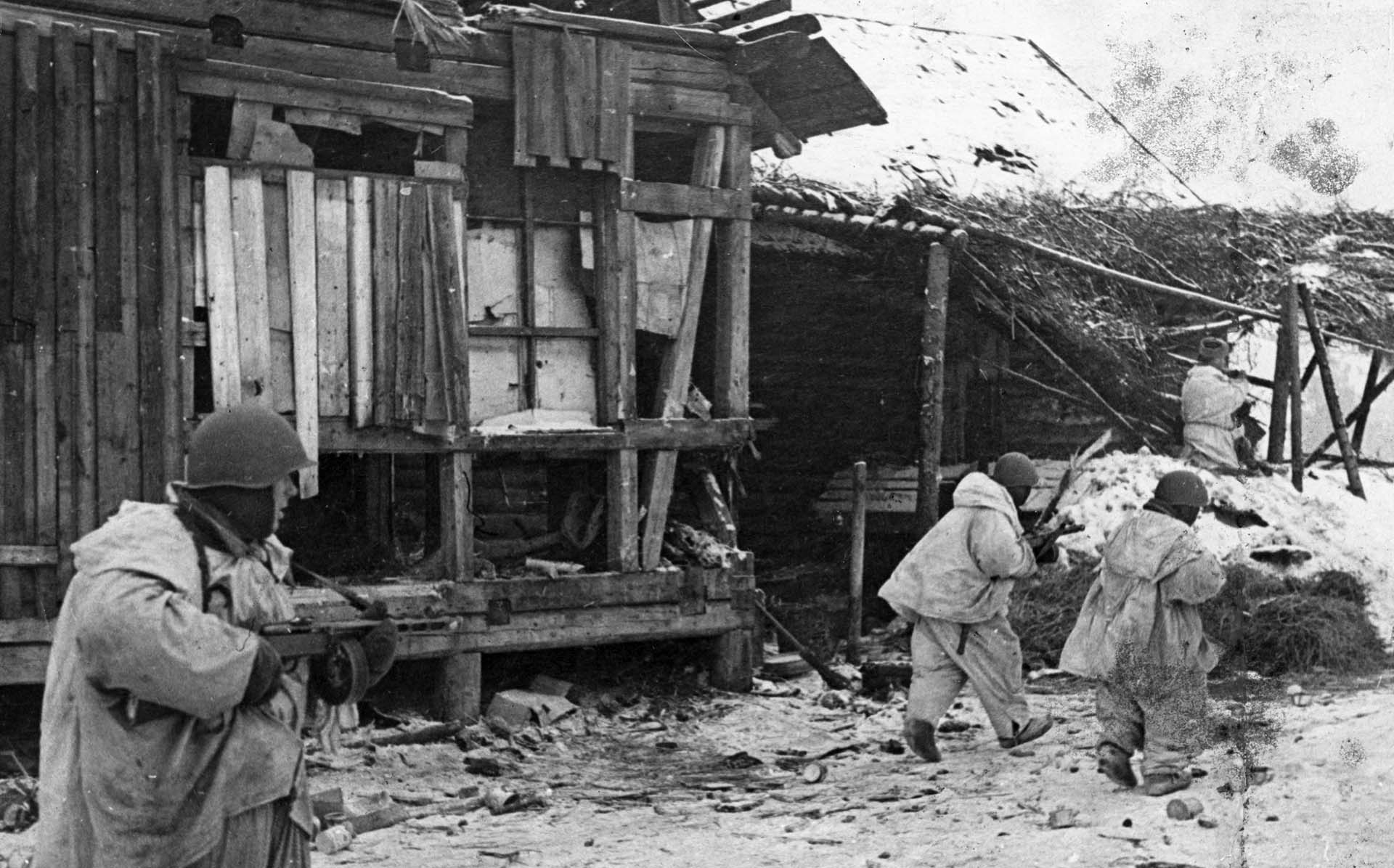
Things went from bad to worse as the Russian vanguard, the 67th Tank Brigade, was reported closing on Vormann’s headquarters at Mala Vyska. Transport and supply personnel under the command of a Colonel von Bernuth, augmented by headquarters security forces, formed a defensive line and halted the Soviets just a few kilometers from the town. However, the Russians succeeded in cutting communications between Vormann and Kirovograd, leaving the corps commander in the dark about the rapidly developing situation.
Bayerlein’s Counterattack
On the morning of January 6, Bayerlein began his counterattack at 0600. With Captain Botho König’s II/Pz. Rgt.6 and Captain Karl-Heinz Brandt’s I/ Pz. Gren. Rgt. 3 in the lead, the 3rd Panzer hit the Russians north of Lelekova and kept rolling through the startled Soviet defenders. A few T-34s and 15 enemy 76mm antitank guns were destroyed in the first hours of the attack.
Bayerlein planned to cut supply lines to the Soviet forces west of Kirovograd. He also hoped to link up with von Wiethersheim’s 11th Panzer, which was coming down from the north. As darkness set in, the 3rd Panzer had advanced eight kilometers, but it could go no farther.
Bayerlein’s supply columns could not keep up with his tracked vehicles because of the deep snow. As a result, the divisional artillery had depleted its ordnance. His armor was also short of ammunition. The Soviets had recovered from their initial surprise, and reinforcements were rushing to the area. Only five kilometers away was the spearhead of the 11th Panzer, but it might as well have been on the moon.
“We Must Break Out”
Driving back to his headquarters, Bayerlein discussed the situation with his operations officer, Lt. Col. Wilhelm Voss. He had been thinking about the stupidity of Hitler’s no withdrawal order on the return trip.
“We had come up against this in Africa,” he recalled. “It almost cost us the Afrika Korps at Alamein. If Rommel had not gone against it, the war in Africa would have been over in 1942. The Sixth Army had been destroyed at Stalingrad because of such an order.”
Voss told Bayerlein that communications with the XLVII Panzer Corps were still out. He also said there was no doubt that the divisions defending Kirovograd, including the 3rd Panzer, were now encircled.
Bayerlein thought that Kirovograd sounded too much like Stalingrad. “We must break out,” he told Voss.
Citing their dwindling supplies, Bayerlein convinced Voss that it would be better to fight from outside the pocket, where ammunition and fuel would be available. He also said that the division would be much more mobile, as a panzer division should be. With the issue decided, he told Voss to move whatever supplies were left to the front and hand them out to the fighting units.
“We will break out tomorrow,” he said. “Make all the necessary preparations.”
The lack of communications with Vormann’s headquarters was a stroke of good luck for Bayerlein. He would use his own judgment, unencumbered by a senior commander who would probably follow Hitler’s order to the letter.
“3rd Panzer Division is Busting Through the Ring”
At midday on January 7 Bayerlein went to meet with Schmidt, Unrein, and Schwarz. He told Schmidt, who was the senior officer present, of his intentions. Schmidt did not object to the plan, but he also stated that he would continue to obey the no withdrawal order. The other two officers followed his lead.
The main front was now only 10 kilometers to the east of Kirovograd, and some Soviet units had even made it into the southern suburbs of the city before being stopped. With the lines shrinking, Schmidt said he would use part of his 10th PGD to take over Bayerlein’s sector.
Returning to his headquarters, Bayerlein held an officers call with those who could be spared from the fighting. “We need freedom of action,” he told the assembled men. “Therefore, we will break out of this trap tonight.”
The general and Voss then returned to planning the breakout attempt, which would begin just when it started to get dark at 1600. A total of five combat groups would move, one behind the other, toward the positions of the 11th Panzer Division.
Group A was the spearhead. Composed of all the division’s running tanks, the armored infantry carrier company, Colonel Hans Lattmann’s self-propelled artillery, and armored engineers, Group A’s job was to batter its way through the Russian defenses. Group B would follow with more engineers and artillery and Colonel Ernst Wellmann’s Pz. Gren. Rgt. 2. The next group would consist of medical units, wounded troops, supply columns, and towed damaged vehicles. Lt. Col. Wilhelm Beuremann’s reinforced Pz. Gren. Rgt. 394 was next. The rear guard, Group E, was Deichen’s Armored Reconnaissance Battalion 3. Self-propelled antitank and antiaircraft elements would guard the columns’ flanks.
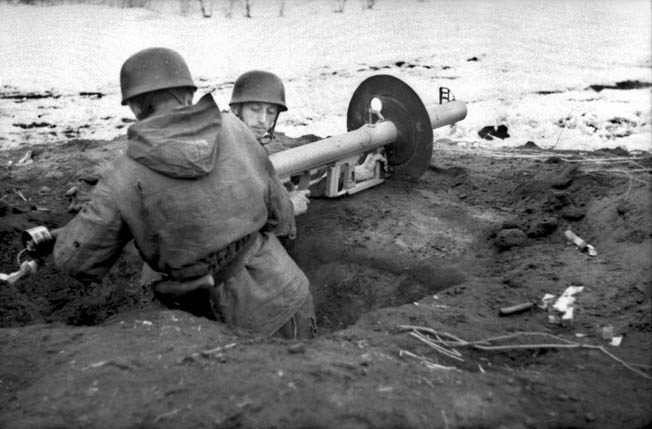
At 1600, the lead element, spearheaded by König’s reinforced II/Pz. Rgt. 6, moved out. Bayerlein had ordered that a final radio message be sent to Vormann and Wöhler. It said, “3rd Panzer Division is busting through the ring in a northwesterly direction in order to close gap in the front and to operate in the enemy’s rear against the encircled town.” He did not wait to see whether anyone received the message, ordering radio silence as soon as it was sent.
Evacuating the XLVII Panzer Corps
The temperature was 13 degrees, and no moonlight shone through the overcast sky. Bayerlein was in his Kübelwagen (open-topped utility vehicle) with König’s tanks. As they approached recently constructed Soviet positions, Russian antitank guns opened up on the lead tank, which burst into flames. The fire exposed the advancing columns, but it also sent the Russians into a panic. In the flickering light of the burning panzer, Bayerlein’s force must have seemed much larger than it actually was.
König’s panzers attacked with covering fire given by the panzergrenadiers and the artillery. With guns blazing, the panzers overran the Soviet positions, crushing antitank guns under their tracks and scattering the Russian defenders. With the path to freedom clear for the moment, Bayerlein ordered the division to move forward again.
The columns could only move as fast as their slowest vehicles, but the surprise from the initial battle kept the Soviets from staging any night attack. As dawn broke, the Germans anxiously eyed their flanks while continuing northeast. Finally, after a 40-kilometer forced march, Bayerlein spotted the lead elements of the 11th Panzer Division near the village of Ivanivka. With the loss of only one panzer and a few trucks, the breakout had succeeded.
“We were all very relieved when we saw the steel helmets of the men of the 11th Panzer,” Bayerlein recalled.
Communications with the XLVII Panzer Corps were now restored. Bayerlein learned what had happened as he made his report to Vormann. The 67th Tank Brigade had broken through headquarters defenses and had forced the corps staff to flee. The corps adjutant, Major Kurt Hasse, was a two-time gold medal winner in the equestrian event at the 1936 Olympics in Berlin. Organizing a defense with what was left of the corps signal battalion along with cooks and supply personnel, Hasse held off the Soviets until the staff escaped. He died defending his position, as did many of the others.
During the hurried evacuation, the corps transmitters and signaling devices were left behind. Vormann and his staff had to make it about 15 kilometers to Novomyrhorod in the deep snow. Once there, he used an Eighth Army telephone exchange to regain contact with his subunits after his communications personnel jury rigged the system. Now that he could once again communicate with his divisions and with Eighth Army headquarters, it was time to strike back.
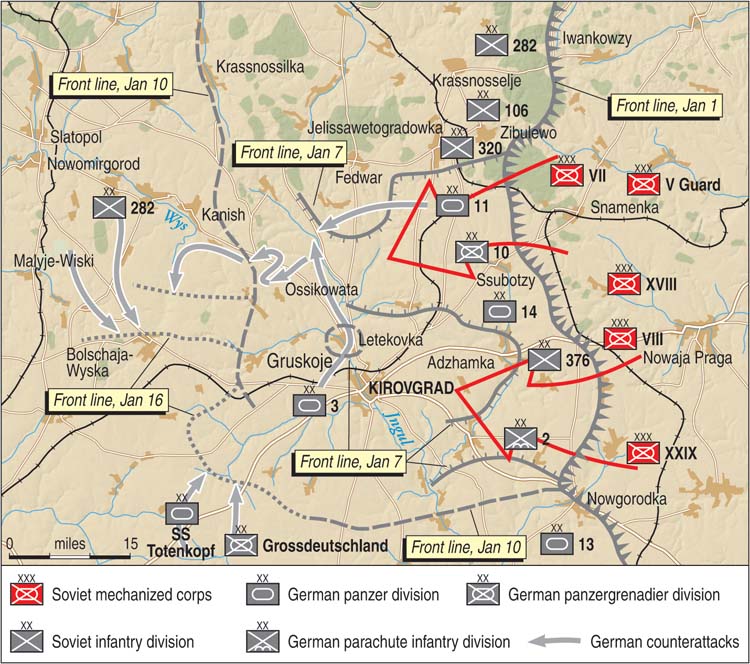
The Fighting in Kirovograd
Fighting was now raging inside Kirovograd, with the three divisions trapped there being slowly pushed back into a dwindling pocket. The hard-pressed 2nd FJD was barely holding the line south of the city, with some companies suffering 60 to 70 percent casualties, and the Russians were still pushing elements westward through the porous line.
At the point of the Soviet assault, the 67th Tank Brigade, after taking Mala Vyska, roamed the battlefield like a phantom. It had surprised defending forces at an airfield south of Mala Vyska and had destroyed the facility. Unfortunately for the Russians, the aircraft stationed there, the III/Schlachtgeschwader (ground attack wing) 2, was on a mission. The unit, commanded by tank-busting ace Captain Hans-Ulrich Rudel, would exact a heavy toll on the brigade during the next few days.
Field Marshal von Manstein had already ordered elements of SS Brig. Gen. Hermann Priess’ 3rd SS “Totenkopf” (Death’s Head) Panzer Division and Maj. Gen. Walter Hoernlein’s “Grossdeutschland” (Greater Germany) Panzer Division to assemble behind the 2nd FJD soon after the Soviet attack began. Those units were almost at their assembly points. After Bayerlein’s breakout, Vormann now had a striking force of two panzer divisions north of Kirovograd, and he could count on the two arriving panzer divisions in the south. With luck, the Germans could cut off the Russian forces west of the city and plug the gaps in their line at the same time.
After refueling his vehicles and resupplying his depleted ammunition stores, Bayerlein was ordered to do an about face and attack Soviet forces in the Lelekova area. The Russians had already taken most of Kirovograd, and Unrein’s 14th Panzer Division was conducting a desperate rearguard action in what was still in German hands while the 376th Infantry and 10th PGD retreated toward Bayerlein’s objective.
With König’s II/Pz. Rgt. 6 once again in the lead, the 3rd Panzer slammed into the left flank of the 7th Mechanized Corps. The Russians reacted quickly, stopping the German advance. Bayerlein ordered König to retreat and regroup in a depression that was out of Russian view. Marking the Soviet positions, the general had his division artillery open up a murderous barrage.
On the heels of the barrage, König and elements of Wellmann’s Pz. Gr. Rgt. 3 sliced through the Soviet line and advanced toward the village of Osykuvate, some eight kilometers north of Kirovograd. On their way to the village the Germans all but destroyed the 48th Mechanized Brigade, eliminating about 40 antitank guns, killing around 400 Russians, and taking another 500 prisoner. The rest of the brigade simply melted away.
To his east, von Wiethersheim also made good progress. “We ran into some initial resistance, but the panzergrenadiers accompanying the panzers soon overcame the Russian positions,” he recalled. “Our artillery hit Russian positions to the rear as we advanced, taking out several antitank guns.”
Wiping Out the 67th Tank Brigade
On January 9, Bayerlein summoned Deichen to his command post. He told the major to take his reconnaissance battalion and head toward Mala Vyska to try and destroy the troublesome 67th Tank Brigade. Accompanying him would be the 6th Company of König’s panzer battalion, commanded by Lieutenant Thiemer. He was also told that he could expect Luftwaffe support. Some time was lost in respelling the tanks, but by midafternoon the battle group was on its way. Some time later, reconnaissance patrols reported that the enemy brigade was in an area around Mala Vyska and was taking a hammering from Rudel’s Junkers Ju-87 Stuka dive bombers.
In a 1967 visit to Rudel at his home just outside of Küfstein, Austria, the author asked the one-legged pilot about Kirovograd and other actions that he participated in during the war. He stated, “It was a good day for hunting.”
“We climbed into our ‘Kanonvogel’ [cannon bird—nickname for the Ju-87G] and flew to the Mala Vyska area,” he recalled. “There were many Russian tanks around the town. I can only conclude that they were waiting for supplies or fuel since they were so far in front of the main Russian force.
“My Gruppe attacked relentlessly. Our Stukas were armed with bombs and a 3.7-centimeter cannon under each wing. Each cannon had six shells. I ordered the squadrons to attack one after the other. The fields were soon littered with burning enemy tanks. Our temporary airfield was close, so we could easily land to refuel and rearm. We didn’t stop chasing the tanks until it became dark. I destroyed 16 tanks and seven assault guns, and my comrades added many more.”
The remnants of the shattered brigade headed east, straight toward Deichen’s reinforced battalion, which had dug in for the night and was preparing for a morning attack. Deichen received reports from his outposts that tracked vehicles were heading his way, followed by patrols reporting enemy tanks with mounted infantry being spotted. He immediately alerted his companies and Thiemer’s panzers, ordering them to prepare for immediate movement.
Deichen had Thiemer’s panzers form an armored wedge with 1st Lt. Kleffel’s armored carriers in the middle. First Lt. Möller’s motorcycles would bring up the rear. At the first signs of daylight, the column moved forward toward the Russians. Enemy vehicles were spotted about 1,500 meters away, and Deichen ordered his men to attack.
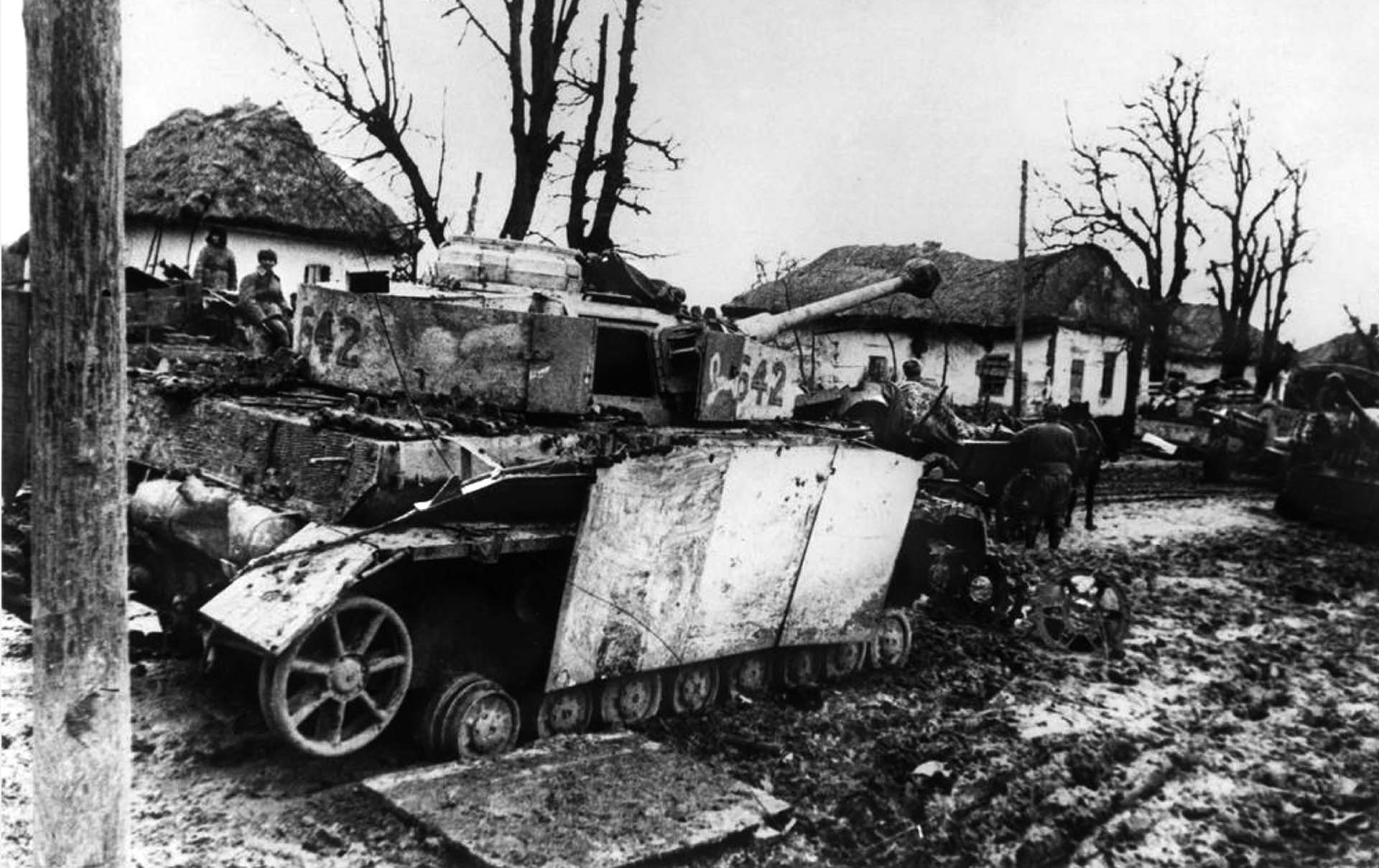
The Soviet column consisted of about 15 T-34 tanks and some trucks. Speeding forward, Thiemer’s panzers got to within killing range before the Russians could react. In accordance with German doctrine, the panzers halted before firing, giving the gunners a stable platform. Picking their targets carefully, the gunners fired a salvo that set several of the tanks ablaze. The surviving enemy vehicles took flight with the Germans hot on their heels. Within a few minutes practically all of the Russian vehicles were destroyed, and a number of prisoners were taken. Deichen, having accomplished his mission, then set out to rejoin the rest of the division.
Three Divisions Saved
While Bayerlein and von Wiethersheim kept the Russians off guard, the three divisions of the Kirovograd garrison slowly retreated to the northwest. About 11 kilometers to the west, the 331st Regimental Group, a remnant of the shattered 167th Infantry Division, reached the village of Gruzkoye. It had been a hard day for the regiment, which had exploited the 3rd Panzer’s success by fighting its way through the Soviet defenses to reach the village, which was about eight kilometers west of Kirovograd.
Upon hearing of the Soviet advance into the city, Hitler belatedly gave permission for the three trapped divisions to break out, not knowing that most of the German troops had already left. The few rearguard units still present in the city quickly pulled out to join up with their parent units. As night fell on January 9, the weary landsers of the 331st received new orders. They were to support the 3rd Panzer in a night attack to link up with the surrounded units.
General Schmidt was informed of the attack and immediately ordered the bulk of the three divisions to prepare for a westward assault. Coordinating with Bayerlein, the two forces attacked, catching a number of panicked Soviet units between them. The Russians quickly fled.
Schmidt described the escape in the 10th Divisional history: “We were led out of the Lelekovka pocket without loss. Because there was only one frozen road for supply, the withdrawal of the divisions had to be precisely scheduled…. Only a few enemy tanks vainly tried to stop the breakout….The 10th Panzergrenadier Division withdrew with all its wounded. No serviceable heavy weapons or guns were left to the enemy.”
Before dawn the forward patrols of the 331st met up with Schmidt’s advance elements. Three German divisions had been saved from annihilation, and a new line could now be formed, trapping the Soviet forces that were left west of Kirovograd.
Blocking a Soviet Breakthrough
The Russians were furious about letting the Germans slip through their fingers and began hammering the enemy line with heavy artillery. The paratroopers of the 2nd FJD were hit particularly hard, but they held their ground as elements of Hoernlein’s Grossdeutschland took up positions on their left flank. Priess’ Totenkopf Panzer Division was following to strengthen the line. Also coming from the south was Korps Abteiling (Detachment) A, which consisted of the remnants of the 161st, 293rd, and 355th Infantry Divisions.
To relieve pressure on the paratroopers, a battle group of the Grossdeutschland attacked Soviet forces entrenched in and around the village of Karlivkha on the morning of January 10. Supported by Stukas, the battle group managed to penetrate the village but was driven back by heavy fire. A second attack took place at 1700. Although sustaining heavy losses, the Germans managed to take the southern half of the village before being forced to go into a defensive posture. It was a costly operation, but the Soviets were forced to divert units attacking the 2nd FJD to stop them, giving the paratroopers a welcome respite.
The 3rd Panzer Division had little time to celebrate the rescue of their comrades. As soon as the liberation was complete, the division was ordered north to Kanizh to help the 320th Infantry Division, which was in danger of being overrun. Some Soviet tanks and supporting units had already broken through the division’s defenses. Bayerlein’s men were now in an all-around battle, trying to stop the Russian breakthrough while defending against Soviet units trying to retreat from the pocket that had formed west of Kirovograd. As Bayerlein put it, “It was hard to tell who was surrounded—the Germans or the Russians.”
Lieutenant Helmut Leuthardt’s 5/Pz. Rgt. 6 struck the Soviets that had broken through the lines of the 320th. The Russians were setting up positions in the village of Andreevka when they were surprised by Leuthardt’s panzers. After a preliminary salvo, the panzers rushed the half finished antitank gun positions, spraying them with machine-gun fire. Crushing the remaining guns under their treads, the panzers swept through the village, firing at the Russian survivors. In a few minutes Leuthardt’s men had destroyed 15 76mm antitank guns. They then proceeded to hunt down the tanks that had broken through.
While fending off the Soviet attack on one front, Bayerlein ordered another combat group to block a Russian breakout attempt west of Mala Vyska. At the village of Maryanrovka, 28 kilometers north of Kirovograd, the combat group ran into heavy enemy resistance. Panzergrenadier Rgt. 394, which was defending in the Vladmirovka area, also reported a concentration of enemy tanks moving on its position. Luckily for the 3rd Panzer, two regiments of Freyking’s 282nd Infantry Division were arriving to support the division.
Preparing an Attack on the Russian Flank
On January 11, a Russian attack, preceded by a heavy artillery barrage, hit the German line north of Gruzkoye. The ferocity of the attack pushed the Germans back, and the Russians threatened to break through. Only heavy German counterfire prevented a mini-disaster.
Bayerlein called on König’s panzer battalion to lead a counterattack the next day, with the rest of the division and Freyking’s two regiments to follow. The attack hit the Russians hard. Deichen’s reconnaissance battalion drove the Soviets out of Maryanrovka and kept going. Accompanied by mounted infantry, König’s panzers bypassed Aleksandrovka and headed for Soviet defenses on the edge of a forest south of the village.
The Russians had little time to react. While the panzers blazed away, the infantry dismounted and rushed forward. The surprised Soviets fired a ragged volley before pulling back, leaving eight assault guns and two tanks ablaze—victims of König’s guns. Ten antitank guns were also destroyed.
With followup forces arriving to press the Russians further, the 3rd Panzer pulled out of the line. The constant combat of the past few days had taken its toll on both men and equipment, and the landsers hoped they could get some much needed rest. The respite would last only a few hours, however, as the division received orders to head to a new hot spot the following day.
A strong Soviet force had hit the junction of the XI Army Corps and the XLVII Panzer Corps and had forced a gap between the two units. Colonel Hermann Hohn’s 72nd Infantry Division, on the IX Corps’ southern flank, and Brig. Gen. Paul Forster’s 389th Infantry Division, which was guarding XLVII Panzer Corps’ northern flank, had both been forced to retreat, causing the gap. On Forster’s right, Maj. Gen. Werner Forst’s 106th Infantry Division was also forced to retreat because of its exposed flank. A domino effect across both corps was likely unless the situation was restored.
Vormann ordered the 3rd Panzer to assemble at Pancheve, five kilometers northwest of Kanizh. Once there, the division would hit the Russian flank. Bayerlein and Voss worked out the details of the attack while the 3rd was on the move.
The 3rd Panzer Division Strikes
As the 3rd Panzer headed toward its assembly area, the fighting southwest of Kirovograd continued unabated. Soviet forces attacked the line 27 kilometers west of the city. During previous attacks the Russians had identified the defending German units in the sector as the weakened 14th Panzer and 376th Infantry Divisions. Having been occupied with fighting the 2nd FJD and the Grossdeutschland farther south for the past few days, they failed to realize that the 3rd SS Panzer Division had inserted itself between the two divisions.
After the usual preliminary artillery barrage, the Russians attacked with a combined armor and motorized force. The SS grenadiers held their fire as the enemy approached. Priess’ men were veteran troops, and they knew their job well. The order to engage was finally given, and a hurricane of bullets and shells hit the advancing Soviets. Well-camouflaged antitank weapons blazed away, turning several enemy vehicles into twisted, burning hulks. The defense left the Russians reeling, and the attack was stopped dead in its tracks.
Russian forces then moved farther south where they found the 376th. They hit the division’s left flank in a wooded area. The headquarters of the 3rd SS Panzer received a message stating, “The left flank of the 376th is fully enveloped. To plug the gap a battle group from the SS Regiment Eicke, supported by part of SS Flak Detachment 3, moved to meet the threat. Combined with elements of the 376th, these units stopped the breakthrough, and the line was restored.”
The Russians tried different parts of the line south of Kirovograd, but the added punch of the Grossdeutschland and 3rd SS Panzer led the attacking units to disaster. Leaving behind hundreds of bodies and dozens of burning tanks, Soviet commanders finally called off their doomed attacks. Both sides were drained by the heavy fighting, and the front in the south soon stabilized.
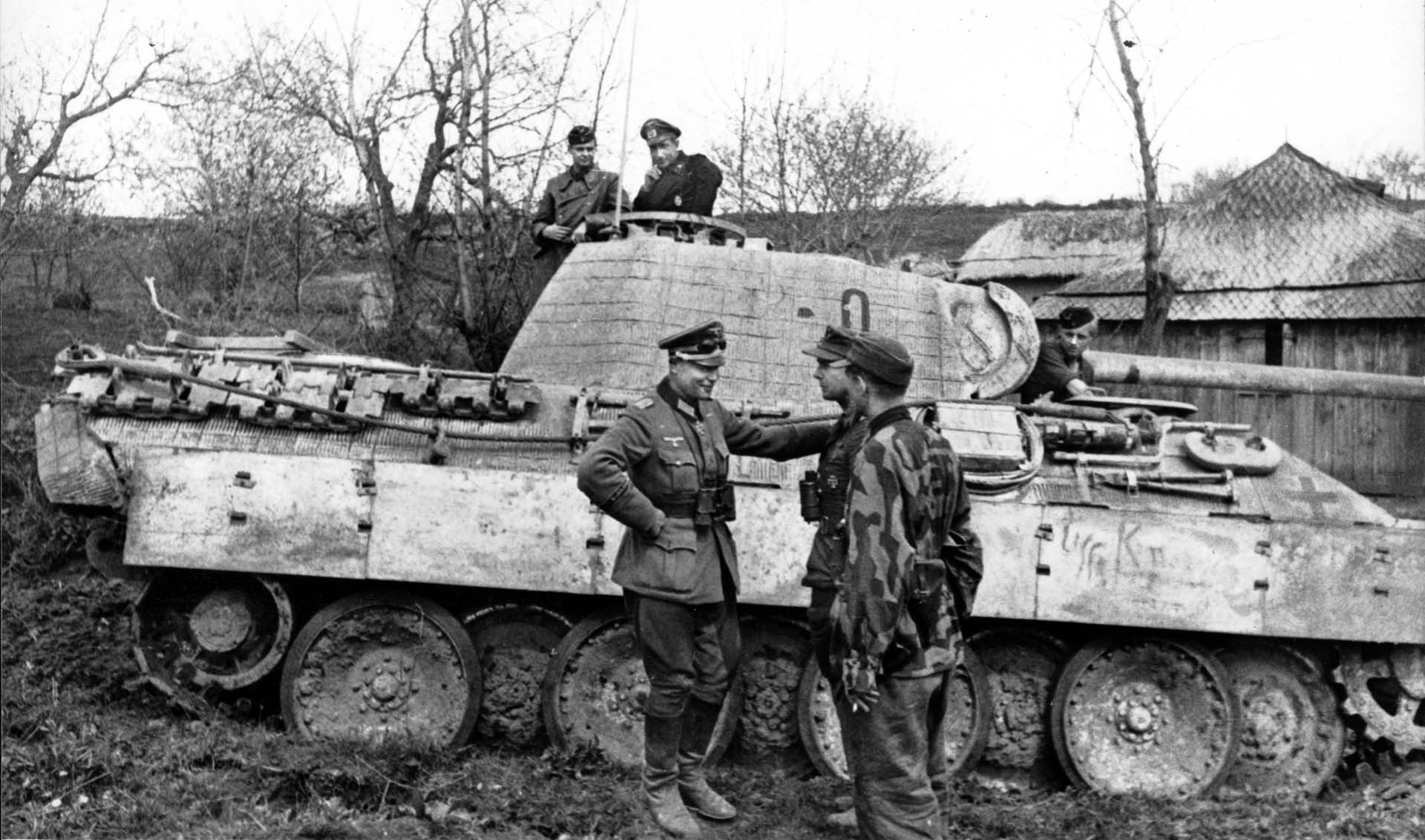
While the Russians battered the southern sector, the 3rd Panzer began its attack at 0900 on January 15. By noon, several enemy positions had been taken with heavy losses to the Soviets in both men and material. The main objective of the attack was the village of Rymentarovka. A company of PzKpfw. V Panther medium tanks from the 11th Panzer Division had been attached to the 3rd to support the assault. The preliminary attack on the forward Russian positions succeeded perhaps too well, as the rapidly advancing panzers moved ahead at full speed, resulting in the following motorized infantry losing contact with them. Without panzer-infantry coordination, the strongly defended village could not be taken that day.
After regrouping the following day, the attack on Rymentarovka resumed. Panzergrenadier 3, supported by the Panthers of the 11th Panzer, stormed the village after a brief bombardment, while Pz. Gren. Rgt. 394 provided flank security. The Russians put up stiff resistance at first, but after several positions fell they withdrew, leaving the village in German hands. A Soviet counterattack was met by König’s battalion, which sent the surviving Russians fleeing.
The German Eighth Army Survives
The fighting around Kirovograd had been costly for both sides. Some German infantry regiments were now at barely battalion strength, and the remaining tanks in the panzer divisions were in desperate need of repair. To the Germans’ good fortune, the Russians had shot their bolt after mid-January. They had gained ground and had taken Kirovograd, but the main objective of encircling and destroying the Eighth Army had failed. Instead, they looked to the northeast, where two German corps were on the verge of being encircled and destroyed in the Korsun-Cherkassy area.
Wöhler’s Eighth Army Headquarters claimed that 490 enemy tanks, 100 artillery pieces, 15 antiaircraft guns, and dozens of antitank guns had been destroyed between January 9 and January 15 alone. It also claimed 3,871 prisoners taken. Thousands of other Russianss had either been killed or wounded.
The front west of Kirovograd had now stabilized, with the 3rd Panzer occupying positions north of Pancheve. To Bayerlein’s right were the 106th Infantry, 11th Panzer, 282nd Infantry, and Priess’ 3rd SS Panzer. Schwarz’s 36th Infantry held the sector directly west of Kirovograd. Running south of the 376th were the 14th Panzer, Grossdeutschland, and the 2nd FJD.
With the line now sealed, the few remaining Russian units to the west were hunted down and destroyed, either by Rudel’s Stukas or by armored security units. Out of ammunition, food, and fuel, they were easy prey for the hunters, who were aided in their search by reconnaissance aircraft.
Bayerlein’s disobedience of Hitler’s orders resulted in Vormann having a mobile force that was used again and again to settle several dangerous situations. Surprisingly, he was not disciplined by Berlin, and he left the 3rd Panzer to take up his new command of the Panzer Lehr Division. If things had turned out differently at Kirovograd, and if he had survived the combat after his breakout, Bayerlein would probably have been sent to prison or possibly executed.
The Eighth Army had won a decisive defensive victory. Although the Russians continued to press the armies on either side of Wöhler, the enemy forces in front of the Eighth Army would need several weeks to rest and replace the men and material lost during the battle.
In his memoirs, Field Marshal von Manstein praised both the Eighth Army and the neighboring Sixth Army, stating, “Thanks to the heroism of the German troops and the numerous stopgaps devised by the two army commands, the enemy in this combat area continued to have only limited success, despite the fact that he was now many times stronger in numbers and material. Although the Eighth Army’s front was pushed back a little to the west and Kirovograd was abandoned, the enemy did not accomplish a decisive breakthrough for the purpose of trapping our forces in the Dnieper bend.”
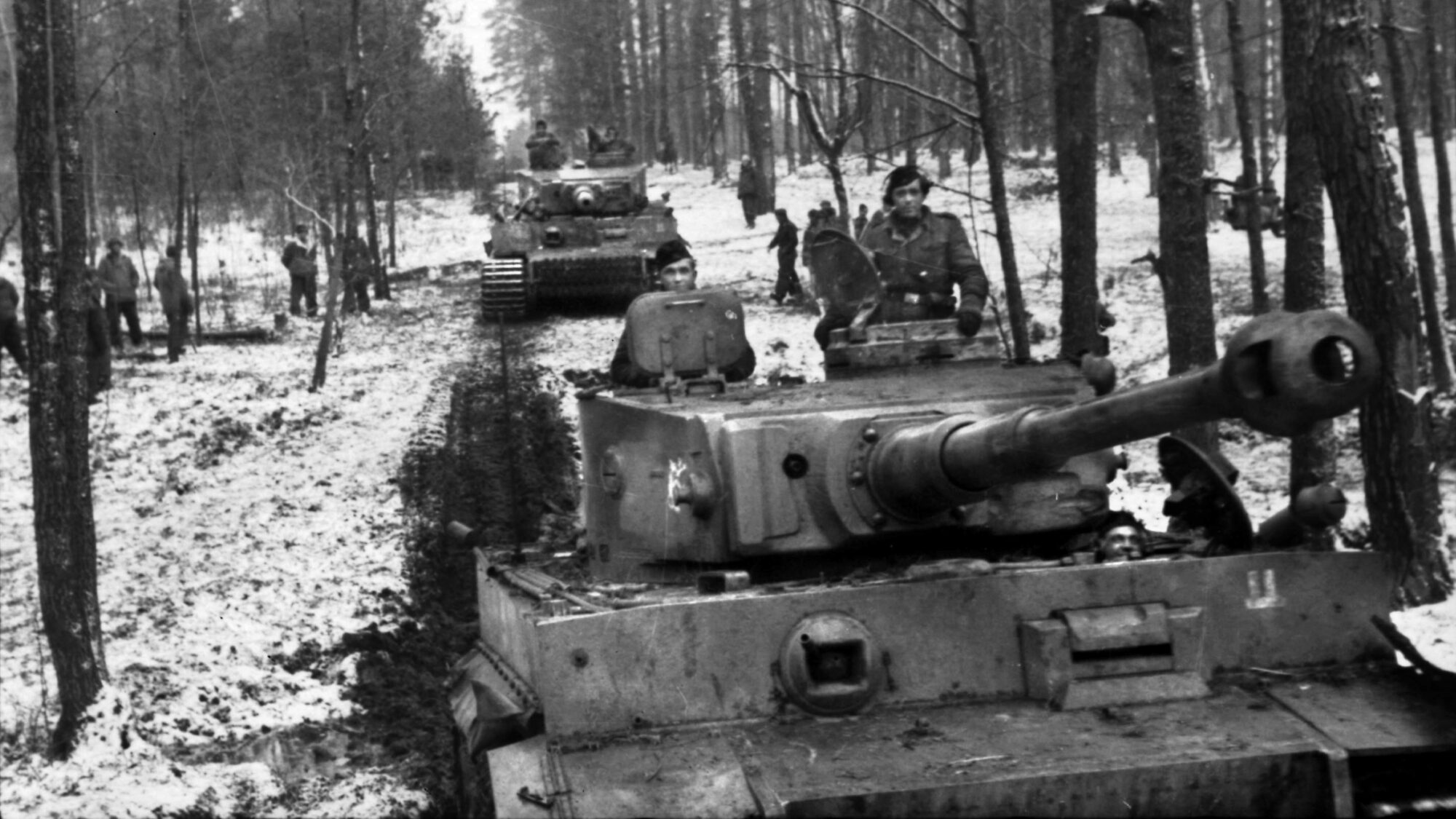
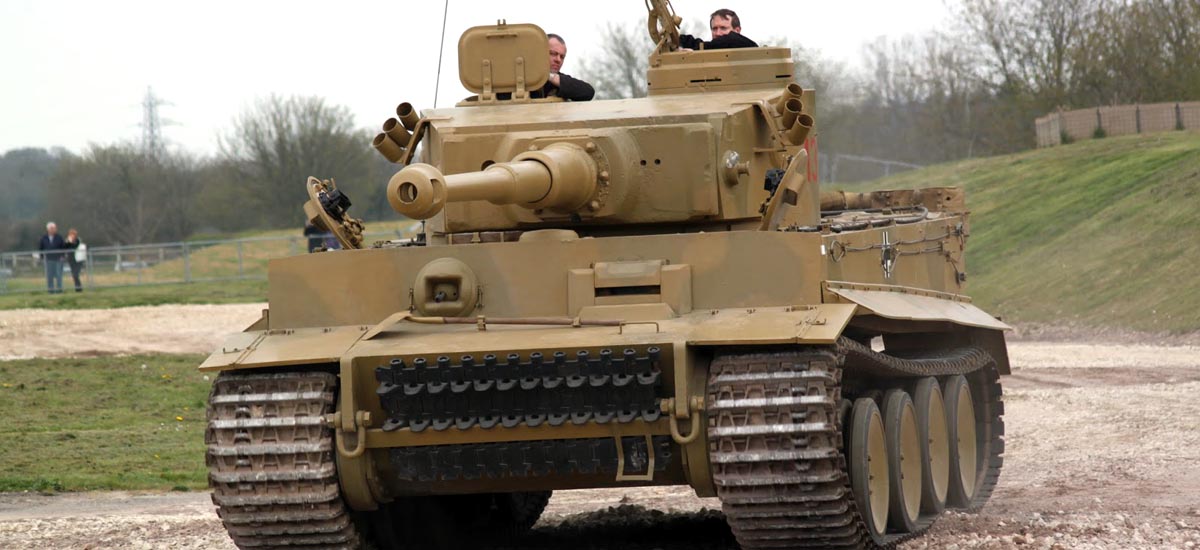
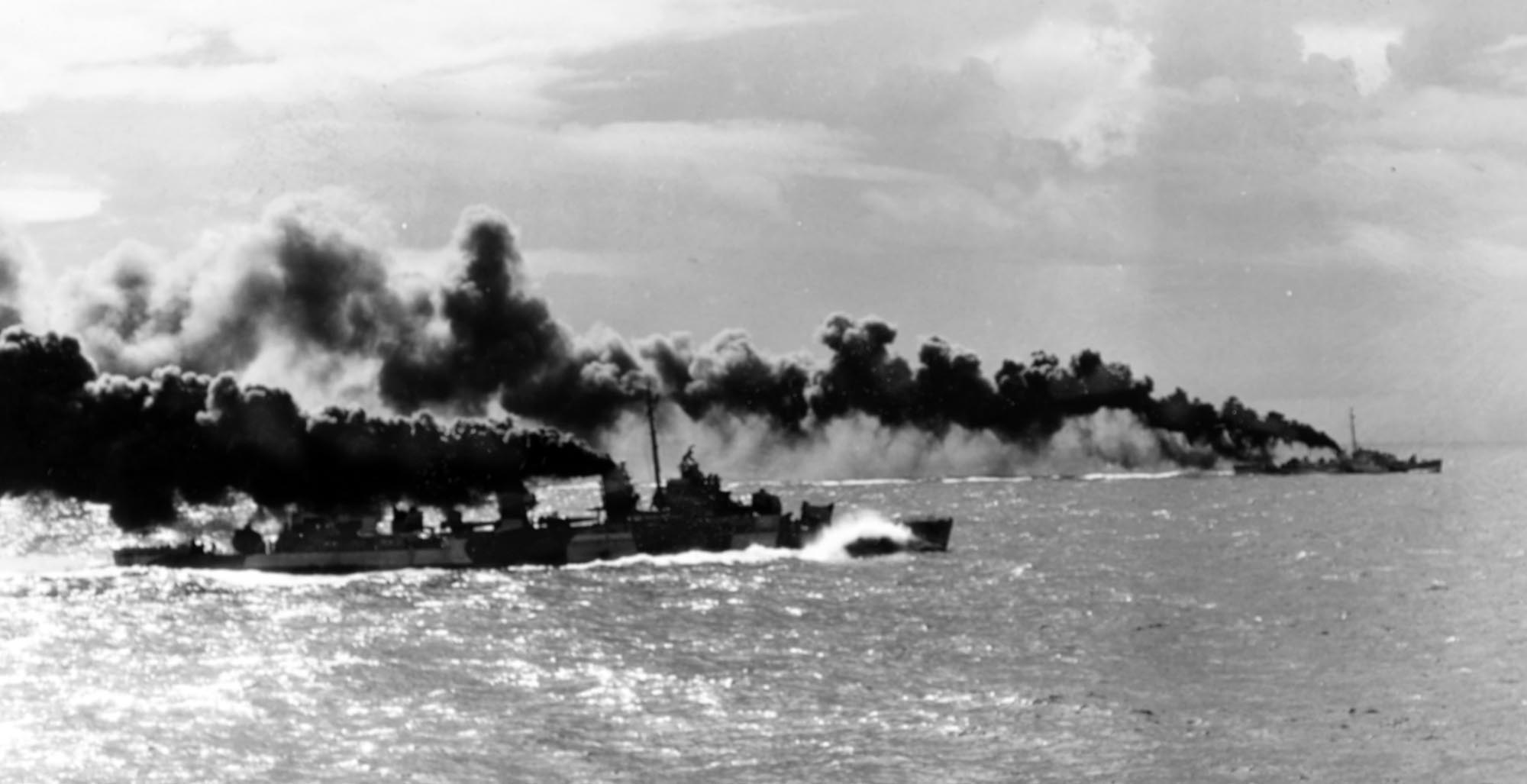
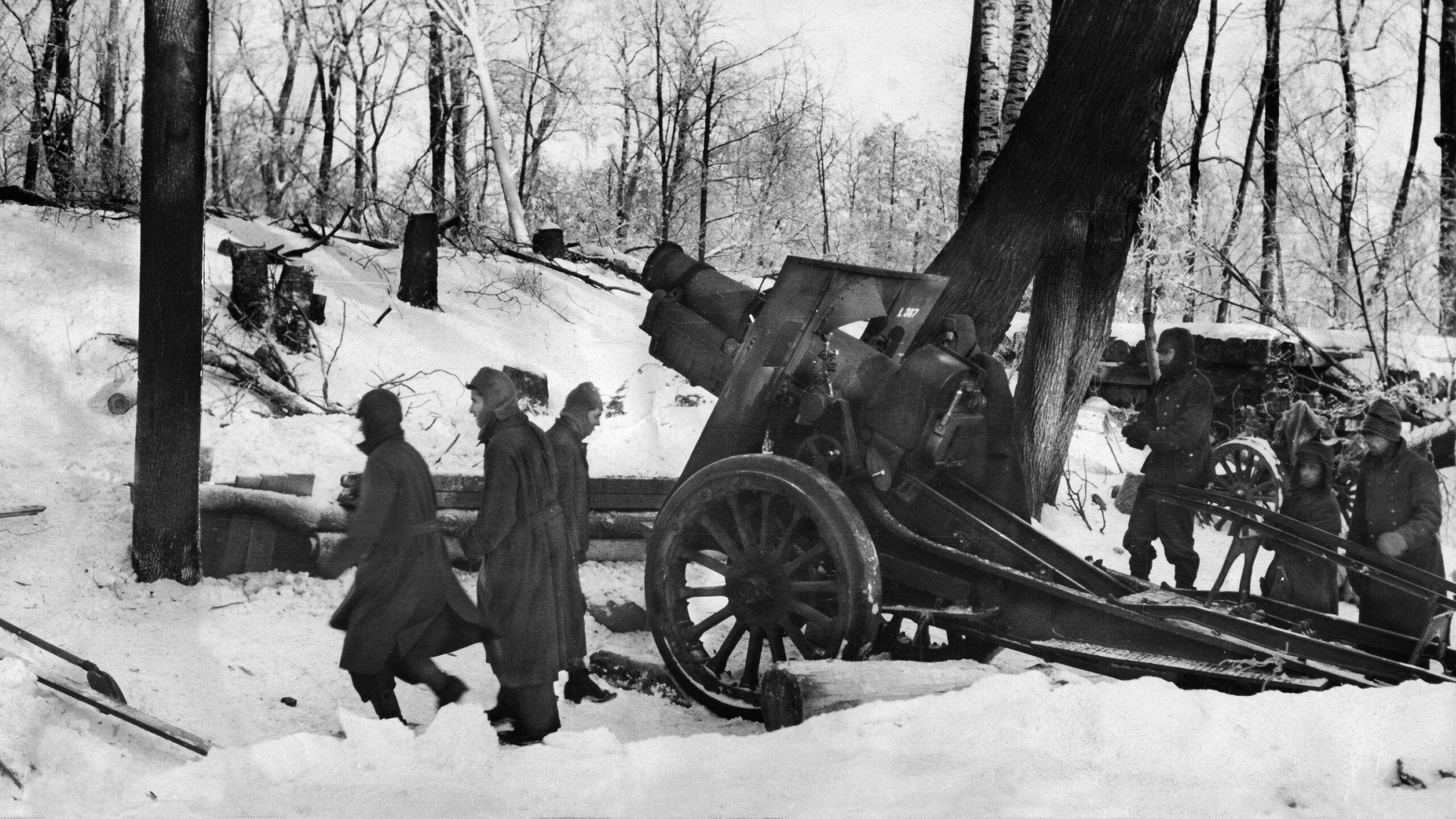
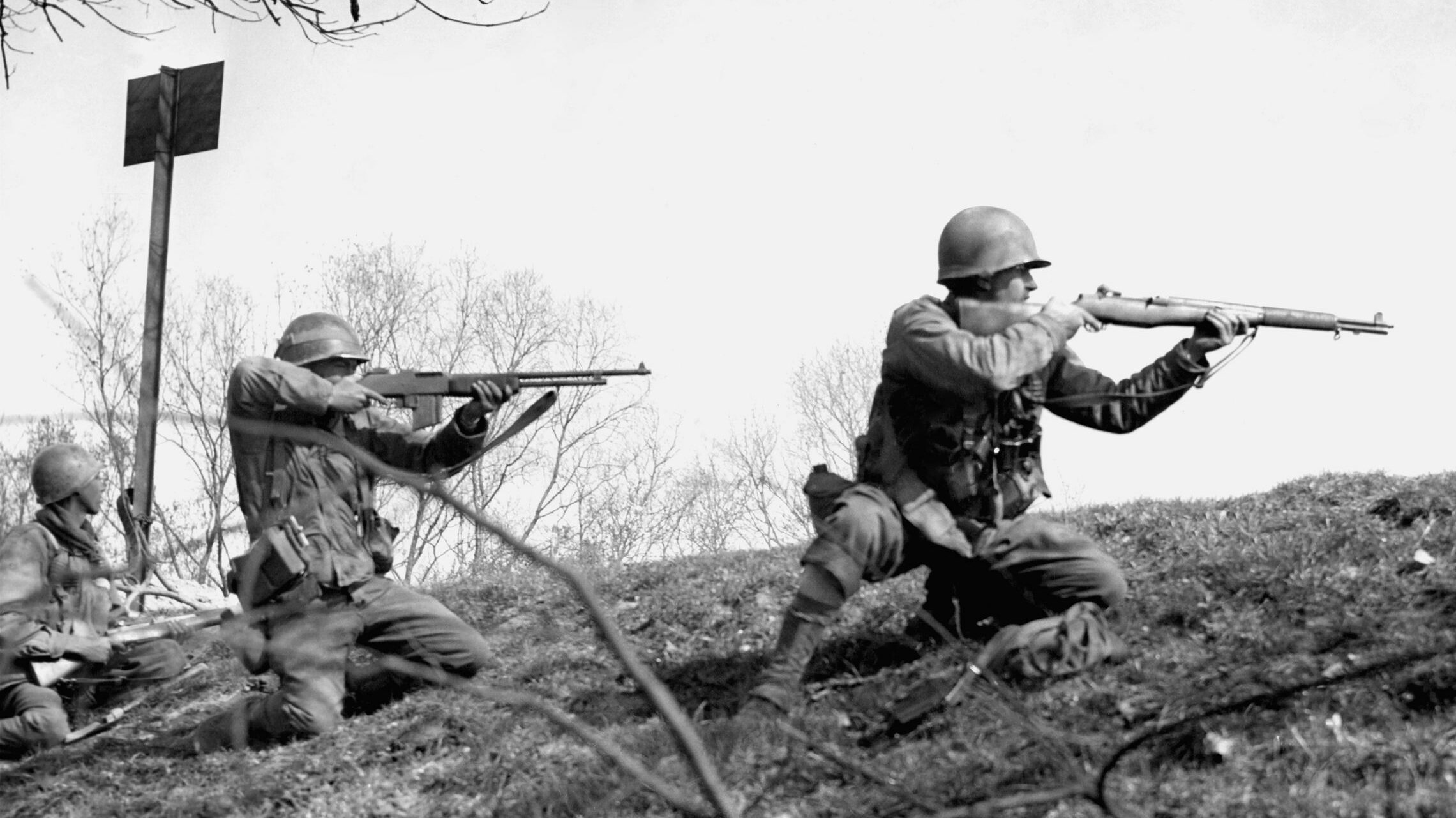
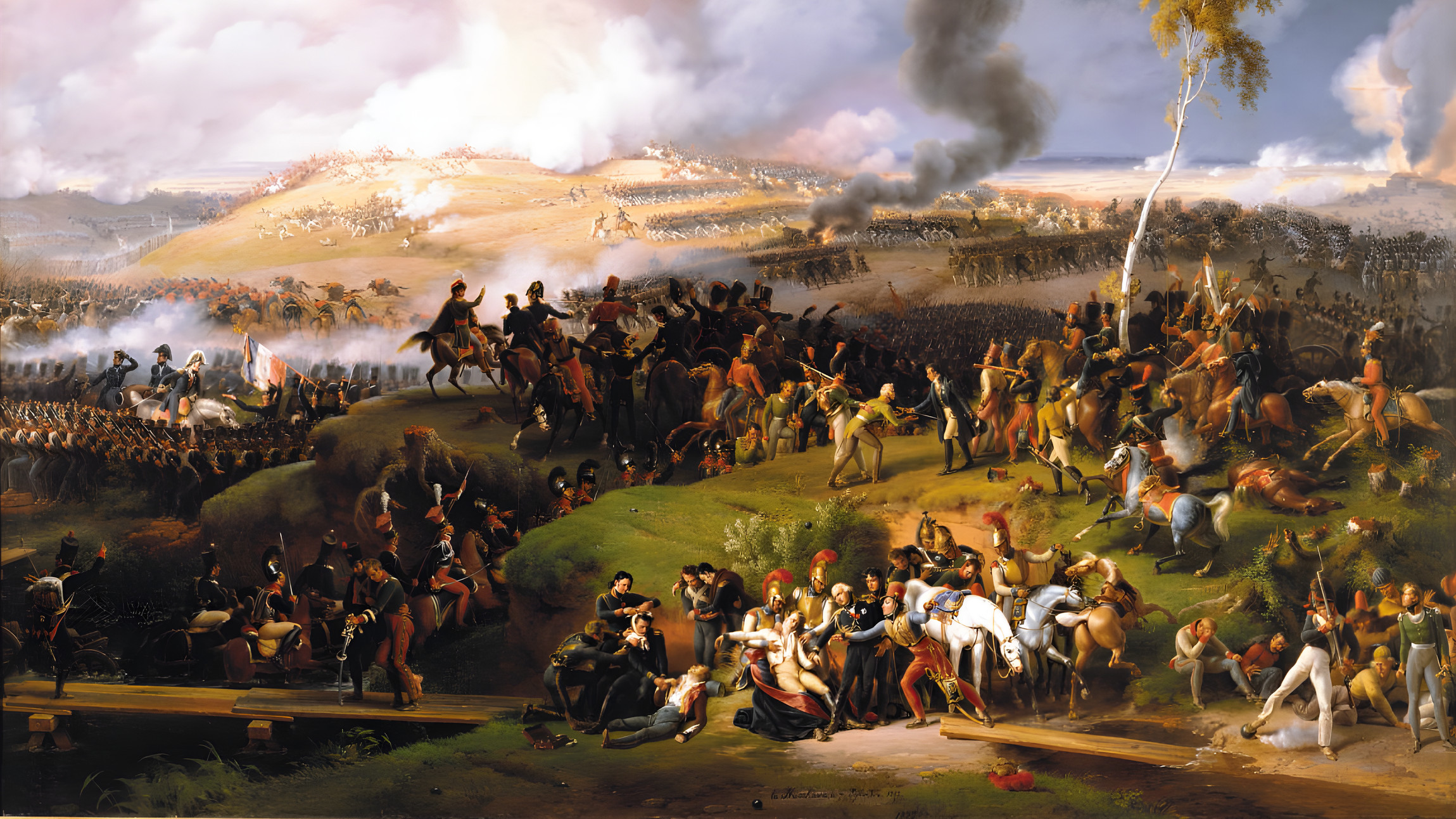
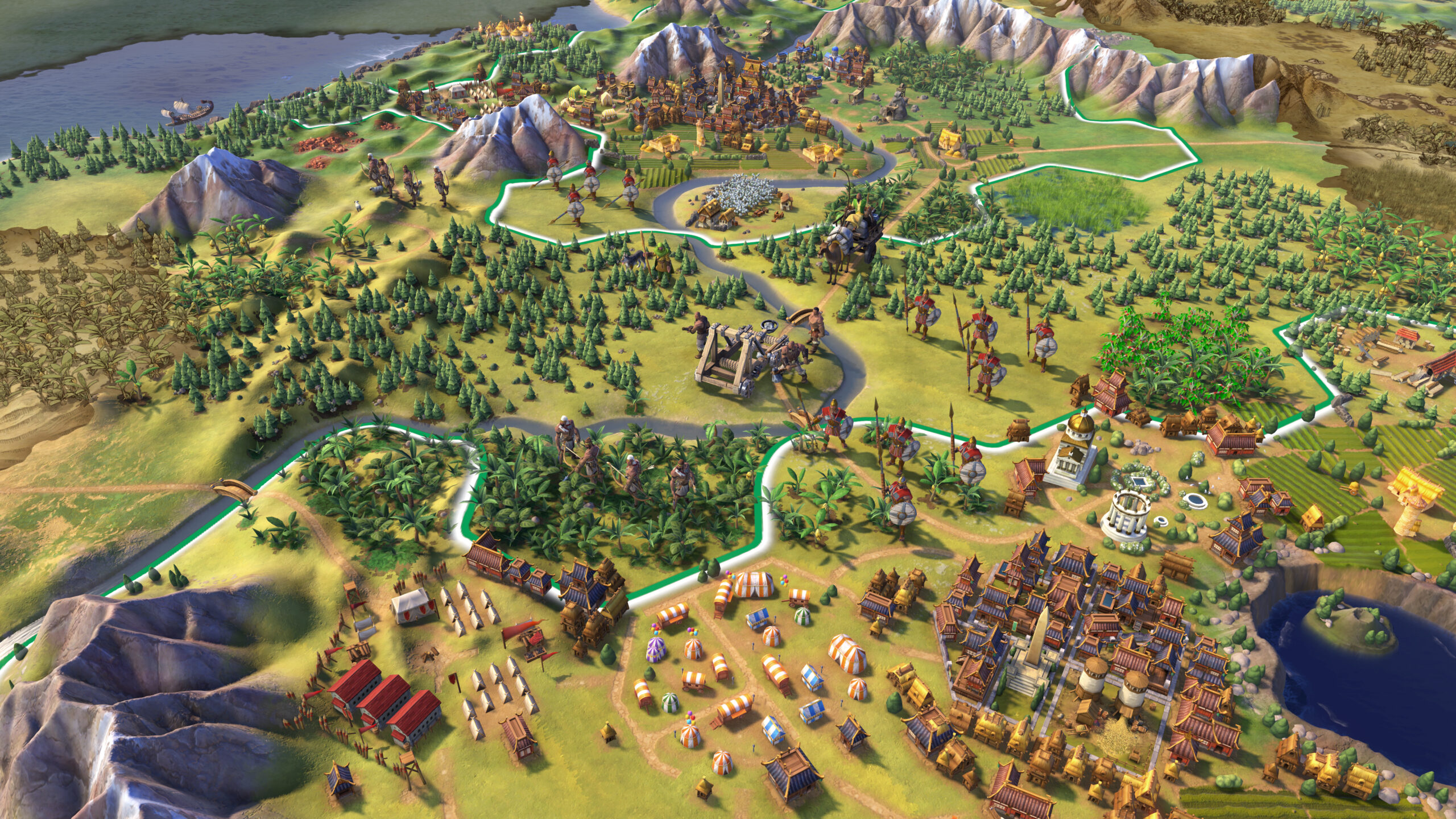
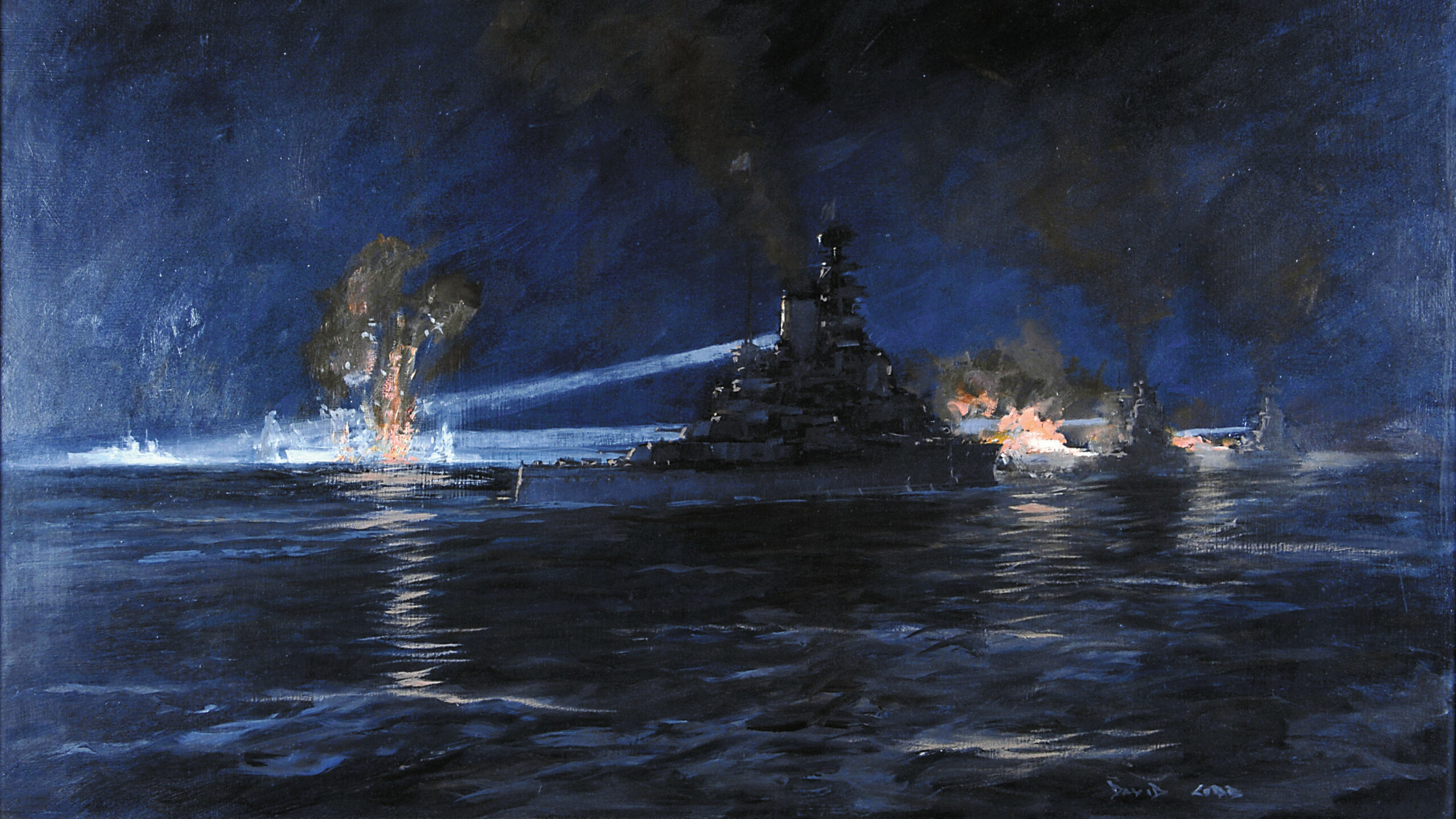
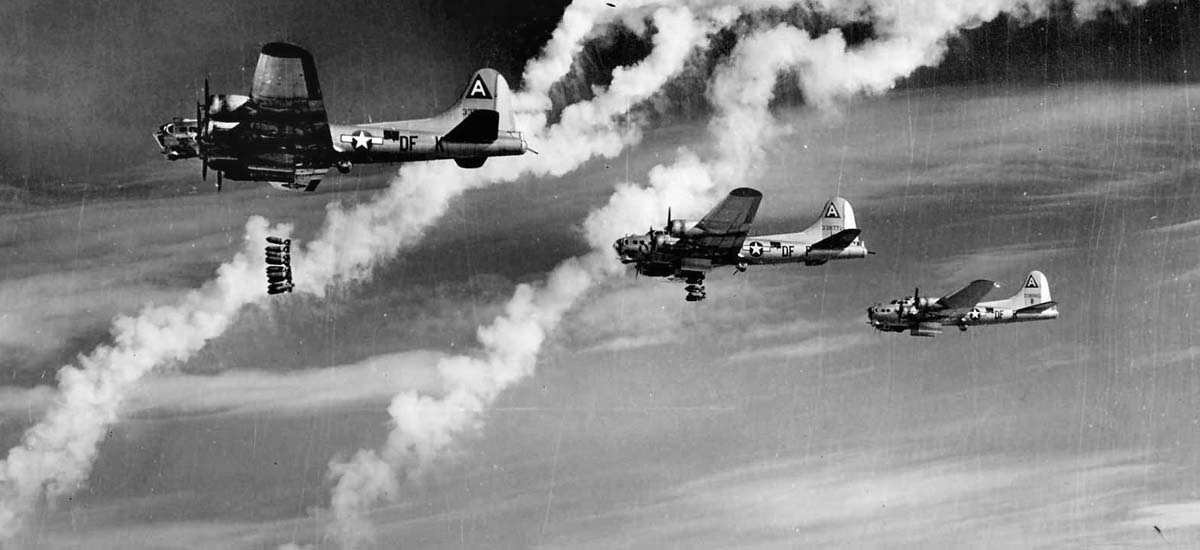
One picture was mislabeled, that is in fact a panzer IV not a tiger.